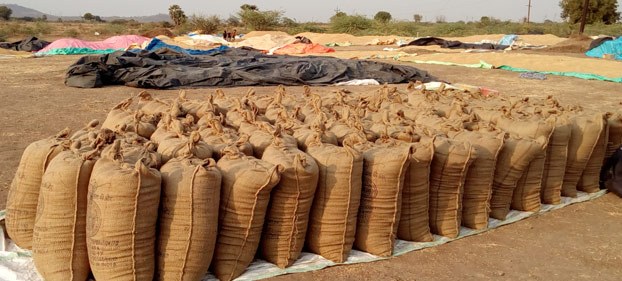Jajpur: The looming food crisis in Jajpur district intensified further as the state government placed an indent for procurement of 6,000 quintals (600 MT) of rice from Bargarh district, a report said.
The matter came to the fore after the managing director of Odisha State Civil Supplies Corporation (OSCSC) placed an order with a private agency Sriram Cattlefeed in Kalahandi to procure 6,000 quintals of rice from Bargarh district and transport it to Jajpur district.
The MD has sought production of the requisitioned amount of rice with the district administration of Jajpur by January 7.
The OSCSC was forced to place the order as the district fell short of 3,500 MT of rice for distribution among 3 lakh beneficiaries in February and March under the public distribution system. It, however, has received only 577 MT of rice by December 31.
The district requires 10 lakh quintals of rice annually for distribution among the beneficiaries of BPL, Annapurna, Antodaya and mid-day meal schemes. However, it has to purchase the rest 5 lakh quintals from other districts to fulfill its requirement.
This year, the district administration has set a target of 8, 01,400 quintals of paddy for procurement. However, it has procured only 56,734.62 quintals through 26 primary agricultural cooperative societies (PACS). The district has a total of 122 PACS.
Similar is the situation in Kendrapara and Jagatsinghpur districts as well where the district administrations are facing an acute shortage of rice for supplying to NFSA and other beneficiaries under the public distribution system. These districts are meeting their requirement by purchasing rice from Bargarh, Sambalpur and Subarnapur districts.
That the district has fallen short of rice to meet its own requirements explains the condition of agriculture in Jajpur district.
This has happened due to the government’s bid to build Jajpur district into a mineral based industrialised district. The state government in its bid to create special economic zones provided large tracts of land to various industrial firms, destroying the agriculture in the district.
Sources said the district has a total of 1, 45,450 hectares of farmland out of which 42 per cent receive irrigation facilities during kharip season while 23 per cent receive irrigation facilities in rabi season.
However, in reality half the farmland does not receive water. As a result, the total produce fails to meet the demand of the residents.
This is because more than half the lift irrigation projects are lying defunct while the minor irrigation projects have failed to meet the increasing demand for irrigation.
This has happened despite the presence of several water bodies and rivers in the district for which the apathy of the local political leaders and water resources department is to be blamed.
This apart, the farmland in the district is shrinking due to rapid industrialization taking place in the district while the farmers are no more interested for irrigation due to lack of sponsorship by the state government.
When contacted, civil supply officer (CSO) Surendra Kumar Hota confirmed the development stating that steps are being taken to procure 6,000 quintals of paddy for PDS beneficiaries from Bargarh. He, however, said that the agriculture department could only tell how to increase the food production in the district.
